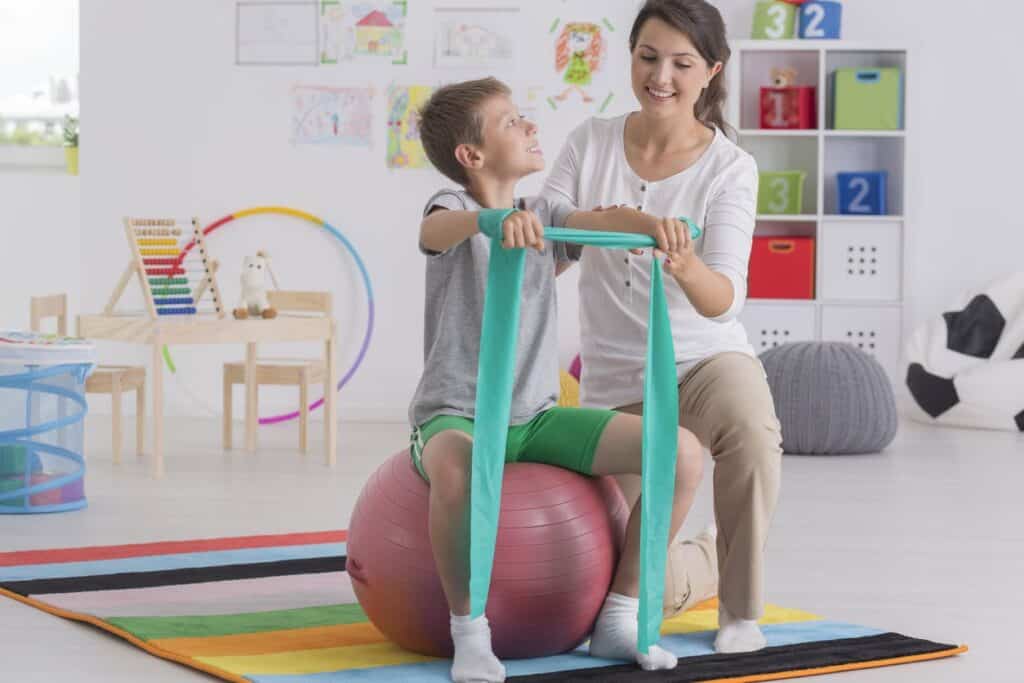Click on study title to view full study.
Studies on Neuro-Movements for ADHD
3) International Journal of Special Education, v19 n1 p23-37 2004
“Results indicated that, in general, boys diagnosed with AD/HD had significantly higher levels of reflex retention than non-diagnosed boys. Results also indicated both direct and indirect relationships between retention of the Moro, ATNR, STNR and TLR reflexes with AD/HD symptomatology and mathematics achievement. The pattern of relationships between these variables was also consistent with the notion of the Moro acting as a gateway for the inhibition of the other three reflexes.”
4) Konicarova J, Bob P. Asymmetric tonic neck reflex and symptoms of attention deficit and hyperactivity disorder in children. Int J Neurosci. 2013 Nov;123(11):766-9. doi: 10.3109/00207454.2013.801471. Epub 2013 Jun 5. PMID: 23659315.
“Results of this study show that ADHD symptoms are closely linked to persisting ATNR, which indicates that ADHD symptoms may present a compensation of unfinished developmental stages related to diminishing ATNR.”
5) Konicarova, J., Bob, P. Retained Primitive Reflexes and ADHD in Children. Act Nerv Super54, 135–138 (2012). https://doi.org/10.1007/BF03379591
“Results of this study show that ADHD children have high occurrence of primitive reflexes compared to the control group, which indicates that ADHD symptoms may present a compensation of unfinished developmental stages related to diminishing Moro and Galant reflexes.”
6) Niklasson M, Niklasson I, Norlander T. Sensorimotor therapy: using stereotypic movements and vestibular stimulation to increase sensorimotor proficiency of children with attentional and motor difficulties. Percept Mot Skills. 2009 Jun;108(3):643-69. doi: 10.2466/PMS.108.3.643-669. PMID: 19725302.
“These finding suggest that a comprehensive training program that includes primitive reflex integration may benefit typically developing children with sensorimotor difficulties and may serve as a complement to regular treatment of developmental coordination disorder, learning disability, or ADHD.
8) Konicarova J, Bob P. Asymmetric tonic neck reflex and symptoms of attention deficit and hyperactivity disorder in children. Intern J Neurosci. (2013) 123:766–9. doi: 10.3109/00207454.2013.801471
9) Konicarova J, Bob P. Principle of dissolution and primitive reflexes in ADHD. Act Nerv Super (Praha). (2013) 55:74–8. doi: 10.1007/BF03379598
10) Konicarova J, Bob P, Raboch J. Persisting primitive reflexes in medication-naïve girls with attention-deficit and hyperactivity disorder. Neuropsychiat Dis Treat. (2013) 9:1457–61. doi: 10.2147/NDT.S49343
11) Leisman G, Melillo R, Thum S, Ransom MA, Orlando M, Tice C, et al. The effect of hemisphere specific remediation strategies on the academic performance outcome of children with ADD/ADHD. Int J Adolesc Med Health. (2010) 22:273–81. doi: 10.1515/IJAMH.2010.22.2.275
12) Slater JL, Tate MC. Timing deficits in ADHD: insights from the neuroscience of musical rhythm. Front Comput Neurosci.(2018) 12:51. doi: 10.3389/fncom.2018.00051
13) Faramarzi S, Rad SA, Abedi A. Effect of sensory integration training on executive functions of children with attention deficit hyperactivity disorder. Neuropsychiatr Neuropsychol. (2016) 11:1–5. doi: 10.5114/nan.2016.60388

